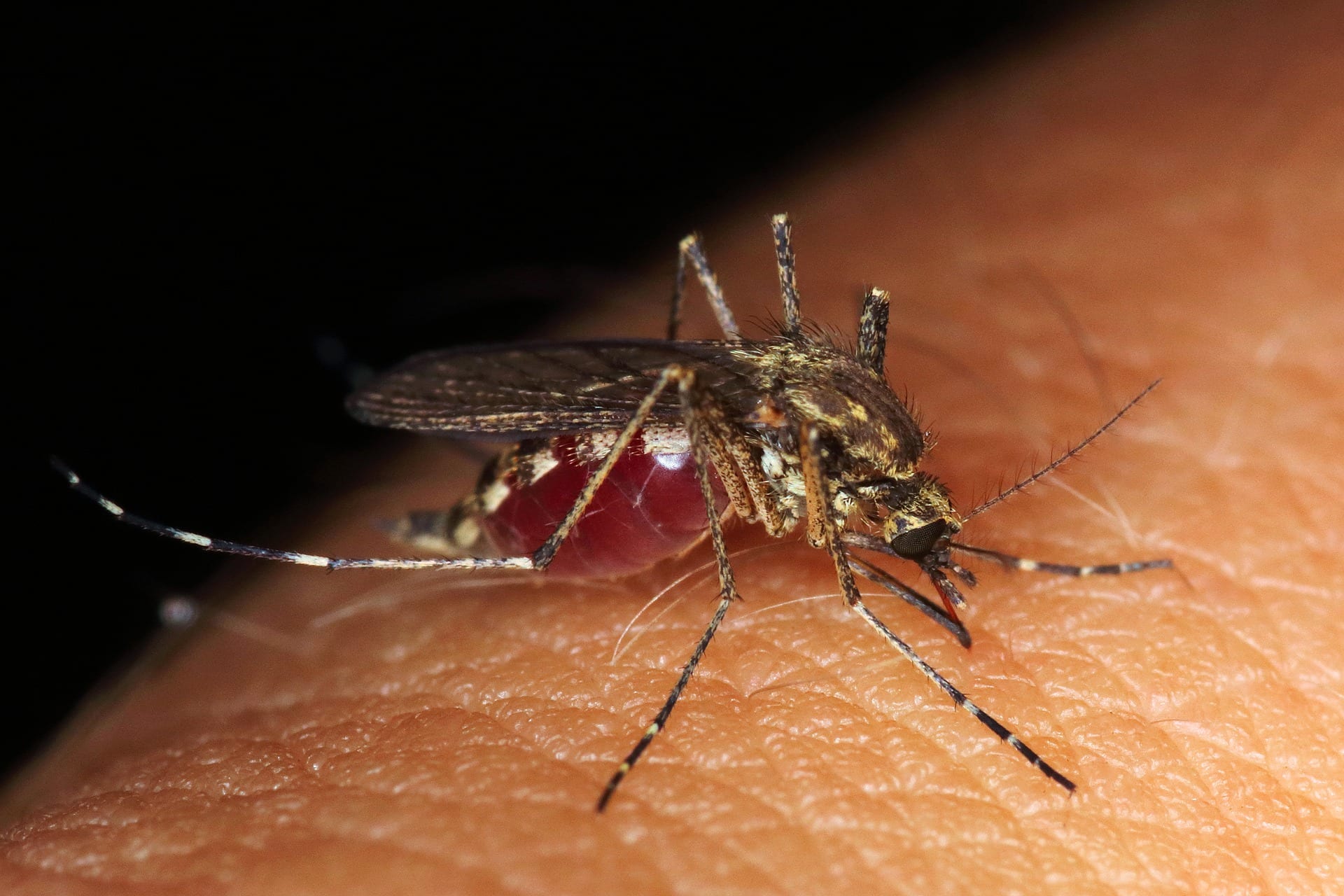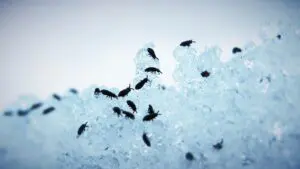

The warm weather has officially come to an end, which means it’s time to say “see you next year” to beach days, ball games and thankfully, mosquitoes. It is commonly thought that all mosquitoes die off when the temperature drops, but if that were the case, there would be no mosquitoes come spring! If only, right? So if they don’t die, where exactly do mosquitoes go during the winter? Well, read on to find out!
Lifecycle
Mosquitoes go through four different developmental stages during their lifespans. Of course, they start out as eggs. Adult female mosquitoes lay their eggs either on the surface of water or in damp soil that will be flooded with water. Species, temperature and availability of water determine how long they will take to hatch, but they usually hatch between 24 and 48 hours after being laid. Eggs can survive a few months in dry conditions before hatching if need be. The eggs will not hatch if there is no water because mosquitoes require water in order to develop into adults. Eggs hatch into larvae, which are commonly called “wrigglers.” Larvae feed on microorganisms, and after molting three times, they become pupae. Pupae, also called “tumblers,” still live in the water but no longer feed. Between two days and one week after becoming pupae, they will molt into adults. Adult mosquitoes will fly away to find food, males looking for plant nectar and females looking for blood. For most species, female mosquitoes need blood in order to lay eggs. Once they have a blood meal, they look for some water in which to lay their eggs, beginning the cycle all over again.
Where do they go?
When it is too cold for mosquitoes, some die and others enter diapause. Diapause is a period during which an insect’s development is suspended. In other words, mosquitoes pause their aging process and enter a hibernation-like state in order to survive winter temperatures. As cold-blooded insects, Mosquitoes are most active during the warmer months of the year, as they prefer temperatures around 80 degrees Fahrenheit. This is why there are a lot of mosquitoes in states like Florida. Infestations happen more frequently during wetter seasons due to their dependency on water, so mosquito season takes place in the late spring, summer, and early fall. Mosquitoes do not like cold weather, so their activity will typically cease once temperatures drop below 50 degrees Fahrenheit. Adult male mosquitoes have much shorter lifespans than adult female mosquitoes. They die off after mating, so they do not have to worry about surviving the winter. But how do other mosquitoes survive the winter? Well, different species of mosquitoes have different methods of overwintering, one of the four developmental stages.
Eggs
Some species overwinter as eggs. At the end of the fall season, the adult females of these species will lay eggs in as little as ½ inch of standing water. As the temperature drops, the eggs will enter a form of hibernation, called diapause. During diapause, development stops until the weather is favorable enough to allow for proper development. The eggs will hatch and develop normally as soon as temperatures are steadily above 50 degrees Fahrenheit.
Larvae and Pupae
Certain species of mosquitoes are able to survive the winter after hatching but before becoming adults. They still require water, of course, even in the winter. When the temperature of the water they are in drops below a certain point, the larvae and pupae enter diapause and development will stop. They will come out of diapause once the water warms up again, and they will continue their development into adulthood.
Adults
If a species overwinters as eggs, larvae or pupae, the adults of said species die off before the winter, after mating and laying eggs. Of course, male mosquitoes of all species will die before the winter. The females of some species, however, will not die after mating and will survive the winter. Once the temperature drops too low, mosquitoes become inert and cannot fly. Because of this, they need to find a safe place to wait out the cold weather. Some such places include caves, cellars, hollow logs, sewers, and cracks in the ground. Once they find a suitable place, they enter diapause. Diapause allows the females to survive freezing and waterless conditions for up to six months. These females did not lay their eggs after mating in the fall, so diapause also allows them to delay their egg-laying until weather conditions improve. When the weather warms and the temperatures are consistently above 50 degrees Fahrenheit, the female mosquitoes will become active again and venture out of their hiding spots. At this point, they are almost ready to lay their eggs. The females of most mosquito species require blood to lay their eggs, so their first mission after venturing out is to find a blood meal. They need enough blood to allow the eggs to develop. After they have filled up on blood, they find a place to lay their eggs, which they have been holding since the fall.
And so, the mosquito mystery is solved. We hope you enjoy the lack of mosquitoes this winter. If you’re seeing a few too many when spring arrives, though, give us a call and we’ll send a technician your way.






